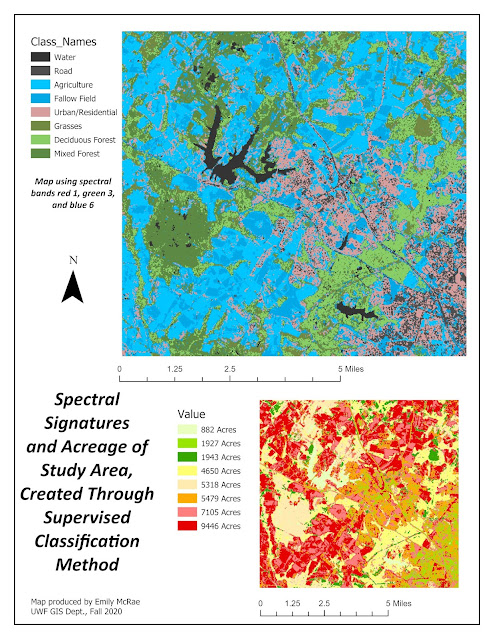GIS 5935 Module 1
This weeks module uses an example of GPS points and a reference point to demonstrate methods of determining accuracy and precision in GIS.
Calculating Precision
Precision refers to the closeness in value a set of values, in this case geographic coordinates, are to each other. It does not indicate anything about the closeness to the actual value, or the actual location of the point in this case.
In this example, a GPS is used to take 50 sample measurements of a single location. The precision of these values can be measured using percentiles. It is generally accepted that those values in the 68th percentile, or those values which make up 68% of all values when ordered numerically from smallest to largest value, are adequately close enough to the reference point, to be considered acceptably precise.
Horizontal precision simply refers to the distance the from which a sample point in the x percentile will be from the average/reference point, moving horizontally in space. The vertical precision is the same, but moving vertically in space.
These are determined by:
2) Subtracting each sample point from this average value.
3) Sorting the values of the sample point.
4) Multiply the count of values by the percent value (.50 for 50th percentile, etc.) to determine the number of values that fall within that percentile.
5) Navigate to that number row in the sorted column.
6) The value contained in that corresponding row is the value under which all values within that percentile will fall.
Horizontal precision for this set of points yielded the following results:
50th percentile = 4.237 meters
68th = 4.386 meters
95th = 14.844 meters
Vertical precision for this set of points yielded the following results:
50th percentile = 4.143 meters
68th = 7.508 meters
95th = 17.967 meters




Comments
Post a Comment